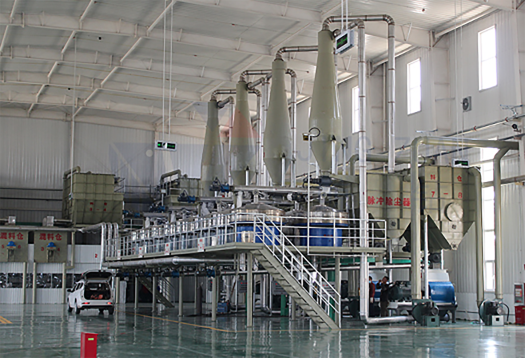
Nov . 27, 2024 09:09 Back to list
Understanding the Comprehensive Meaning and Applications of HPMC in Various Industries
Understanding HPMC A Comprehensive Overview
Hydroxypropyl Methylcellulose (HPMC) is a versatile compound derived from cellulose, and it plays a crucial role in a myriad of industrial and pharmaceutical applications. As a non-ionic cellulose ether, HPMC is known for its ability to form clear solutions in water and its unique gelling properties, making it a preferred choice in many formulations. This article explores the various aspects of HPMC, including its properties, applications, and significance in different industries.
What is HPMC?
HPMC is produced through the chemical modification of cellulose, a natural polymer found in the cell walls of plants. The process involves treating cellulose with propylene oxide and methyl chloride under controlled conditions, which results in the substitution of —OH groups in the cellulose molecule with hydroxypropyl and methyl groups. This modification enhances its solubility in water and alters its viscosity characteristics, enabling a wide range of applications.
Properties of HPMC
One of the standout features of HPMC is its ability to control viscosity. The viscosity of HPMC solutions can be adjusted by varying the concentration of HPMC and the degree of substitution during its synthesis. This makes it an invaluable ingredient in many formulations, where specific textural properties are required.
Moreover, HPMC is characterized by its thermal stability and can withstand a broad range of temperatures. It is also compatible with numerous substances, including salts, sugars, and polymers, which broadens its applicability in various sectors. Additionally, HPMC is odorless, tasteless, and non-toxic, which reinforces its widespread use in food and pharmaceutical products.
Applications of HPMC
In the pharmaceutical sector, HPMC is primarily utilized as a binder, thickener, and film-forming agent in tablet formulations and as a stabilizer in suspensions. Its ability to control drug release through sustained-release formulations is particularly valuable, allowing for prolonged therapeutic effects. HPMC is also used in the production of capsules, where it serves as an alternative to gelatin, providing vegan-friendly options.
hpmc full form

2. Food Industry
HPMC is recognized as a food additive (E464) and is primarily used as a thickener, emulsifier, and stabilizer. Its application in the food industry helps improve the texture and consistency of products like sauces, dressings, and dairy products. HPMC can also retain moisture, enhancing the shelf life of baked goods and preventing staleness.
3. Construction
In construction and building materials, HPMC acts as a crucial additive in cement and plaster formulations. It improves the workability and adhesion of these materials and enhances the retention of moisture, which is vital for proper curing. The use of HPMC in construction has gained popularity due to its effectiveness in improving the physical properties of building products.
4. Cosmetics and Personal Care
HPMC is also widely utilized in the cosmetic industry. It is included in creams, lotions, and gels to enhance texture, stability, and application properties. HPMC's ability to form a smooth film contributes to the overall sensory experience of cosmetic products, making it a valuable ingredient in skin care formulations.
Conclusion
Hydroxypropyl Methylcellulose (HPMC) is a multifaceted ingredient that plays a pivotal role across various industries, from pharmaceuticals and food to construction and cosmetics. Its unique properties, such as viscosity control, thermal stability, and compatibility with other substances, make it an essential component in many formulations. As industries continue to evolve and innovate, the importance of HPMC is likely to grow, offering new solutions and enhancements in product formulations.
In essence, HPMC exemplifies how a natural polymer can be transformed through chemical modification to create a functional and efficient ingredient that meets the diverse needs of modern industries. Understanding its capabilities and applications can empower manufacturers and formulators to harness its potential, ultimately leading to better products and improved consumer experiences.
-
HPMC for Tile Adhesive: Superior Bonding & Workability
NewsAug.30,2025
-
Premium Cellulose Ether: Effective Liquid Thickener Solutions
NewsAug.29,2025
-
HPMC for Tile Adhesive: Enhanced Bonding & Workability
NewsAug.28,2025
-
tile-bonding-additives-for-stronger-bonds
NewsAug.22,2025
-
construction-grade-rdp-for-wholesale-needs
NewsAug.22,2025
-
trusted-hec-supplier
NewsAug.22,2025







